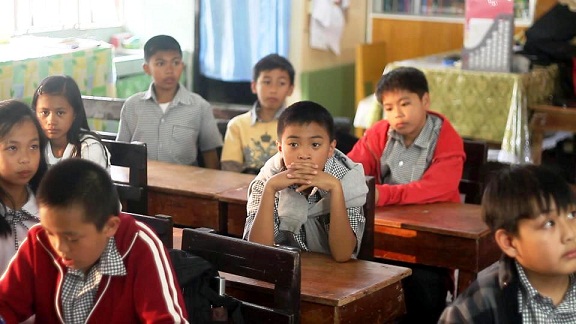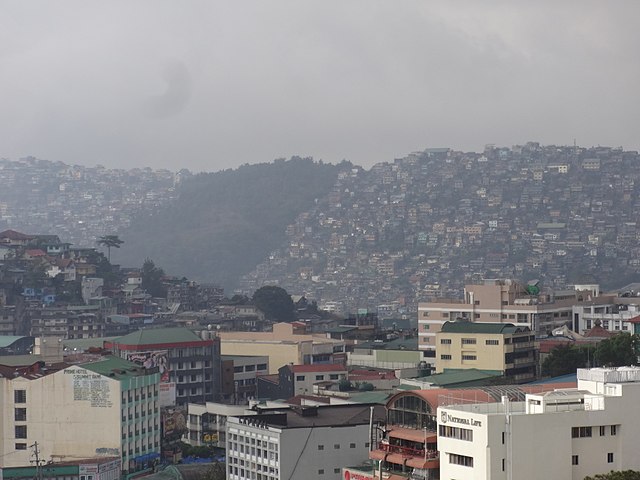By ELIZABETH LOLARGA
Photos by SPYKE PAT-OGAN
HOW often does a movie come along that reflects the heart of Baguio that is invisible to the naked eye? Rarely, if not at all.
And then comes Martin Masadao’s Anac ti Pating (an Iluko phrase roughly translated as “child of a shark”), written and directed by him and winner of the Grand Festival Prize at the Second Sineng Pambansa of the Film Development Council of the Philippines (FDCP). Anac’s main lead, Deuel Raynon Ladia, barely in his teens, is best actor prize winner.
Masadao says, “We hope to tour the film around the country, especially in schools. We’ve been invited to Sineng Rehiyon in Los Baños in February. I believe FDCP will show the Sineng Pambansa 2012 finalists in various cities this year.”
Those used to the pacing and editing of Hollywood movies can put this preference outside a movie house’s door. The style Masadao adopted in his debut film has the contemplative, and therefore, slow pace of a European film. It reflects his sensibility shaped by directors like Francois Truffaut and Woody Allen, who is funny but cerebral.
The pacing suits Baguio’s rhythm of life. Although it is a city, old-timers like Masadao, his cast and crew know how the ticking of the clock up there is like a long drawn-out sigh. Timepieces move slowly.
The time frame of Anac covers one academic year. It captures the non-stop patter of rain during the monsoon months when many residents, especially adults, can get afflicted by Seasonal Affective Disorder (with it apt acronym of SAD), a Christmas eve with a fireplace a-glow, the games unique to Baguio kids (sliding on a pine needle-covered slope using a flattened cardboard as makeshift sled), the preparations and rehearsals for Panagbenga Festival’s street dancing.
The opening scene catches the main character, Sixto Mangaoang (Ladia), only in his elementary grades but mature and intelligent beyond his years, in deep thought. He is scribbling a note. What follows afterwards is an entire flashback that returns to that original scene (the present) and to Sixto’s not-so-rash but well-thought-out decision to seek a life elsewhere away from Baguio, once referred to by Masadao in his play Baguio Stories as similar to “Peyton Place.”
The maturity and sure-footedness of Sixto for his life ahead is manifested by his sleeping in his school uniform so he can be ready to get up early for his classes. He just needs to down his breakfast and thoroughly brush his teeth and cleanse his tongue, and he’s off.
Although one notes a reluctant trudge in his walk to school, it isn’t because he dislikes school work. Like any ultra-smart kid, he puts up with bullying and is able to extract his sweet vengeance on the culprits in many ways like when he earns extra money by doing their homework.
But it is his ties with a Korean boy named Clark (Steve Chong) that fills the void in his life. He must put up with warring parents, a drunken wastrel of a father (Nick Prill Calinao) and a hard-working mother, a richly nuanced performance by Luchie Maranan (herself a writer and compared jokingly by her older brother Ed as the new Lolita Rodriguez in terms of dramatic flair), whose real love is elsewhere, a schoolboy crush on a physical education teacher that is quickly crushed and other failed expectations.
Sixto and Clark embark on a cross-cultural friendship that has them addressing one another with swear words in their respective languages: okinam (your mother’s vagina in Iluko) and shibal lom (asshole in Korean). With Clark’s help, his playmate develops an environmentally themed story about a shark stranded in the Cordillera forest, a story accepted by a Manila publishing house.
The English composition teacher, played by journalist-playwright Nonnette Bennett, is able to bring out the budding writer in Sixto. One is reminded of a brief scene in the 1973 movie The Way We Were wherein Robert Redford plays a novice writer, and the professor reads aloud his work to the class. That same mix of pride and embarrassment is reflected on Sixto’s face as his teacher praises him and his classmates tease him, mainly out of envy.
Trained in past films as art director and production designer, Masadao and his unerring eye for detail intrudes lovingly in almost all scenes, some of them especially symbolic like the cracks on a green and white Baguio home, the rubble that is part of an overpopulated city, his assigning bit roles to Caucasian-looking Kawayan de Guia and newsman Frank Cimatu who play themselves and tapping the community talents in theater like Karlo Altomonte who can steal a scene with just one or two lines.
The next Masadao project, whether film or theater, will be eagerly anticipated.





